Abstract:
Recently, multi-view clustering methods have been widely used in handling multi-media data and have achieved impressive performances. Among the many multi-view clustering...Show MoreMetadata
Abstract:
Recently, multi-view clustering methods have been widely used in handling multi-media data and have achieved impressive performances. Among the many multi-view clustering methods, anchor graph-based multi-view clustering has been proven to be highly efficient for large-scale data processing. However, most existing anchor graph-based clustering methods necessitate post-processing to obtain clustering labels and are unable to effectively utilize the information within anchor graphs. To address this issue, we draw inspiration from regression and feature selection to propose Anchor Graph-Based Feature Selection for One-Step Multi-View Clustering (AGFS-OMVC). Our method combines embedding learning and sparse constraint to perform feature selection, allowing us to remove noisy anchor points and redundant connections in the anchor graph. This results in a clean anchor graph that can be projected into the label space, enabling us to obtain clustering labels in a single step without post-processing. Lastly, we employ the tensor Schatten p-norm as a tensor rank approximation function to capture the complementary information between different views, ensuring similarity between cluster assignment matrices. Experimental results on five real-world datasets demonstrate that our proposed method outperforms state-of-the-art approaches.
Published in: IEEE Transactions on Multimedia ( Volume: 26)
Funding Agency:
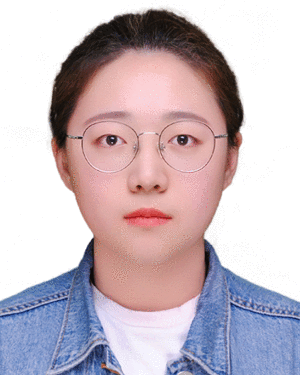
School of Telecommunications Engineering, Xidian University, Xi'an, China
Wenhui Zhao received the B.Eng. degree in information engineering in 2022 from Xidian University, Xi'an, China, where she is currently working toward the M.S. degree in information and communication engineering. Her research interests include pattern recognition, machine learning, and deep learning.
Wenhui Zhao received the B.Eng. degree in information engineering in 2022 from Xidian University, Xi'an, China, where she is currently working toward the M.S. degree in information and communication engineering. Her research interests include pattern recognition, machine learning, and deep learning.View more
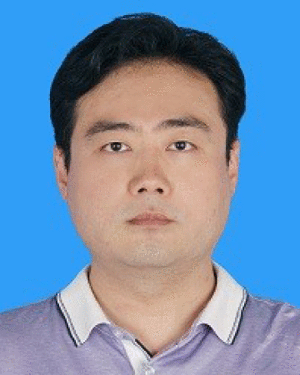
School of Software Engineering, Shenzhen Institute of Information Technology, Shenzhen, China
Qin Li received the Ph.D. degree from The Hong Kong Polytechnic University, Hong Kong, China, in 2010. He is currently a Professional Teacher, a Senior Engineer, and a Shenzhen Peacock Scholar with the Shenzhen Institute of Information Technology College. His current research interests include image processing, pattern recognition, and biometrics based on mobile terminals.
Qin Li received the Ph.D. degree from The Hong Kong Polytechnic University, Hong Kong, China, in 2010. He is currently a Professional Teacher, a Senior Engineer, and a Shenzhen Peacock Scholar with the Shenzhen Institute of Information Technology College. His current research interests include image processing, pattern recognition, and biometrics based on mobile terminals.View more
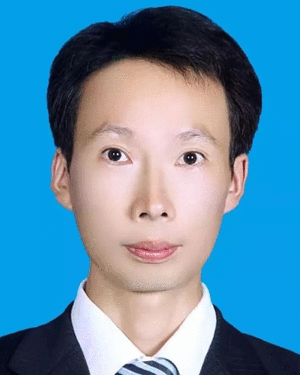
Guangxi Key Laboratory of Digital Infrastructure, Information Center of Guangxi Zhuang Autonomous Region, Nanning, China
Huafu Xu received the Ph.D. degree from Shanghai Jiao Tong University, Shanghai, China, in 2016. He currently holds a leading position with the Research Institute of Big Data Development with the Guangxi Zhuang Autonomous Region Information Center. His research interests include Big Data and cloud computing.
Huafu Xu received the Ph.D. degree from Shanghai Jiao Tong University, Shanghai, China, in 2016. He currently holds a leading position with the Research Institute of Big Data Development with the Guangxi Zhuang Autonomous Region Information Center. His research interests include Big Data and cloud computing.View more
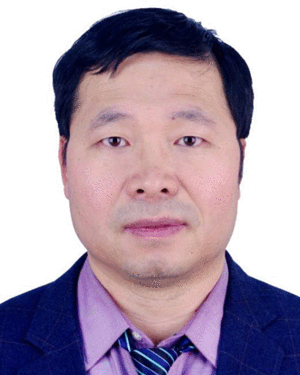
School of Telecommunications Engineering, Xidian University, Xi'an, China
Quanxue Gao received the B.Eng. degree from Xi'an Highway University, Xi'an, China, in 1998, the M.S. degree from the Gansu University of Technology, Lanzhou, China, in 2001, and the Ph.D. degree from Northwestern Polytechnical University, Xi'an China, in 2005. He was an Associate Research with the Biometrics Center, The Hong Kong Polytechnic University, Hong Kong, from 2006 to 2007. From 2015 to 2016, he was a Visiting S...Show More
Quanxue Gao received the B.Eng. degree from Xi'an Highway University, Xi'an, China, in 1998, the M.S. degree from the Gansu University of Technology, Lanzhou, China, in 2001, and the Ph.D. degree from Northwestern Polytechnical University, Xi'an China, in 2005. He was an Associate Research with the Biometrics Center, The Hong Kong Polytechnic University, Hong Kong, from 2006 to 2007. From 2015 to 2016, he was a Visiting S...View more

School of Telecommunications Engineering, Xidian University, Xi'an, China
Qianqian Wang received the B.Eng. degree in communication engineering from the Lanzhou University of Technology, Lanzhou, China, in 2014, and the Ph.D. degree from Xidian University, Xi'an, China, in 2019. She is currently a Lecturer with the School of Telecommunications Engineering, Xidian University. Her research interests include pattern recognition, dimensionality reduction, sparse representation, and face recognition...Show More
Qianqian Wang received the B.Eng. degree in communication engineering from the Lanzhou University of Technology, Lanzhou, China, in 2014, and the Ph.D. degree from Xidian University, Xi'an, China, in 2019. She is currently a Lecturer with the School of Telecommunications Engineering, Xidian University. Her research interests include pattern recognition, dimensionality reduction, sparse representation, and face recognition...View more
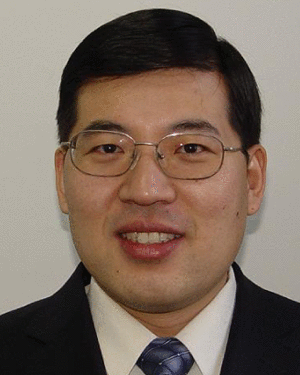
Chongqing Key Laboratory of Image Cognition, Chongqing University of Posts and Telecommunications, Chongqing, China
Xinbo Gao received the B.Eng., M.Sc. and Ph.D. degrees in electronic engineering, signal and information processing from Xidian University, Xi'an, China, in 1994, 1997, and 1999, respectively. From 1997 to 1998, he was a Research Fellow with the Department of Computer Science, Shizuoka University, Shizuoka, Japan. From 2000 to 2001, he was a Postdoctoral Research Fellow with the Department of Information Engineering, the ...Show More
Xinbo Gao received the B.Eng., M.Sc. and Ph.D. degrees in electronic engineering, signal and information processing from Xidian University, Xi'an, China, in 1994, 1997, and 1999, respectively. From 1997 to 1998, he was a Research Fellow with the Department of Computer Science, Shizuoka University, Shizuoka, Japan. From 2000 to 2001, he was a Postdoctoral Research Fellow with the Department of Information Engineering, the ...View more

School of Telecommunications Engineering, Xidian University, Xi'an, China
Wenhui Zhao received the B.Eng. degree in information engineering in 2022 from Xidian University, Xi'an, China, where she is currently working toward the M.S. degree in information and communication engineering. Her research interests include pattern recognition, machine learning, and deep learning.
Wenhui Zhao received the B.Eng. degree in information engineering in 2022 from Xidian University, Xi'an, China, where she is currently working toward the M.S. degree in information and communication engineering. Her research interests include pattern recognition, machine learning, and deep learning.View more

School of Software Engineering, Shenzhen Institute of Information Technology, Shenzhen, China
Qin Li received the Ph.D. degree from The Hong Kong Polytechnic University, Hong Kong, China, in 2010. He is currently a Professional Teacher, a Senior Engineer, and a Shenzhen Peacock Scholar with the Shenzhen Institute of Information Technology College. His current research interests include image processing, pattern recognition, and biometrics based on mobile terminals.
Qin Li received the Ph.D. degree from The Hong Kong Polytechnic University, Hong Kong, China, in 2010. He is currently a Professional Teacher, a Senior Engineer, and a Shenzhen Peacock Scholar with the Shenzhen Institute of Information Technology College. His current research interests include image processing, pattern recognition, and biometrics based on mobile terminals.View more

Guangxi Key Laboratory of Digital Infrastructure, Information Center of Guangxi Zhuang Autonomous Region, Nanning, China
Huafu Xu received the Ph.D. degree from Shanghai Jiao Tong University, Shanghai, China, in 2016. He currently holds a leading position with the Research Institute of Big Data Development with the Guangxi Zhuang Autonomous Region Information Center. His research interests include Big Data and cloud computing.
Huafu Xu received the Ph.D. degree from Shanghai Jiao Tong University, Shanghai, China, in 2016. He currently holds a leading position with the Research Institute of Big Data Development with the Guangxi Zhuang Autonomous Region Information Center. His research interests include Big Data and cloud computing.View more

School of Telecommunications Engineering, Xidian University, Xi'an, China
Quanxue Gao received the B.Eng. degree from Xi'an Highway University, Xi'an, China, in 1998, the M.S. degree from the Gansu University of Technology, Lanzhou, China, in 2001, and the Ph.D. degree from Northwestern Polytechnical University, Xi'an China, in 2005. He was an Associate Research with the Biometrics Center, The Hong Kong Polytechnic University, Hong Kong, from 2006 to 2007. From 2015 to 2016, he was a Visiting Scholar with the Department of Computer Science, The University of Texas at Arlington, Arlington TX, USA. He is currently a Professor with the School of Telecommunications Engineering, Xidian University, Xi'an, China, and also a Key Member of State Key Laboratory of Integrated Services Networks. He has authored around 80 technical articles in refereed journals and proceedings, including IEEE Transactions on Pattern Analysis and Machine Intelligence, IEEE Transactions on Image Processing, IEEE Transactions on Neural Networks and Learning Systems, IEEE Transactions on Cybernetics, CVPR, AAAI, and IJCAI. His current research interests include pattern recognition and machine learning.
Quanxue Gao received the B.Eng. degree from Xi'an Highway University, Xi'an, China, in 1998, the M.S. degree from the Gansu University of Technology, Lanzhou, China, in 2001, and the Ph.D. degree from Northwestern Polytechnical University, Xi'an China, in 2005. He was an Associate Research with the Biometrics Center, The Hong Kong Polytechnic University, Hong Kong, from 2006 to 2007. From 2015 to 2016, he was a Visiting Scholar with the Department of Computer Science, The University of Texas at Arlington, Arlington TX, USA. He is currently a Professor with the School of Telecommunications Engineering, Xidian University, Xi'an, China, and also a Key Member of State Key Laboratory of Integrated Services Networks. He has authored around 80 technical articles in refereed journals and proceedings, including IEEE Transactions on Pattern Analysis and Machine Intelligence, IEEE Transactions on Image Processing, IEEE Transactions on Neural Networks and Learning Systems, IEEE Transactions on Cybernetics, CVPR, AAAI, and IJCAI. His current research interests include pattern recognition and machine learning.View more

School of Telecommunications Engineering, Xidian University, Xi'an, China
Qianqian Wang received the B.Eng. degree in communication engineering from the Lanzhou University of Technology, Lanzhou, China, in 2014, and the Ph.D. degree from Xidian University, Xi'an, China, in 2019. She is currently a Lecturer with the School of Telecommunications Engineering, Xidian University. Her research interests include pattern recognition, dimensionality reduction, sparse representation, and face recognition.
Qianqian Wang received the B.Eng. degree in communication engineering from the Lanzhou University of Technology, Lanzhou, China, in 2014, and the Ph.D. degree from Xidian University, Xi'an, China, in 2019. She is currently a Lecturer with the School of Telecommunications Engineering, Xidian University. Her research interests include pattern recognition, dimensionality reduction, sparse representation, and face recognition.View more

Chongqing Key Laboratory of Image Cognition, Chongqing University of Posts and Telecommunications, Chongqing, China
Xinbo Gao received the B.Eng., M.Sc. and Ph.D. degrees in electronic engineering, signal and information processing from Xidian University, Xi'an, China, in 1994, 1997, and 1999, respectively. From 1997 to 1998, he was a Research Fellow with the Department of Computer Science, Shizuoka University, Shizuoka, Japan. From 2000 to 2001, he was a Postdoctoral Research Fellow with the Department of Information Engineering, the Chinese University of Hong Kong, Hong Kong. Since 2001, he has been with the School of Electronic Engineering, Xidian University. He is currently a Cheung Kong Professor of Ministry of Education of P. R. China, a Professor of Pattern Recognition and Intelligent System of Xidian University and a Professor of computer science and technology with the Chongqing University of Posts and Telecommunications, Chongqing, China. He has authored or coauthored six books and around 300 technical articles in refereed journals and proceedings. His current research interests include Image processing, computer vision, multimedia analysis, machine learning and pattern recognition. Dr. Gao is on the Editorial Boards of several journals, including Signal Processing (Elsevier) and Neurocomputing (Elsevier). He was the General Chair/Co-Chair, Program Committee Chair/Co-Chair, or PC Member for around 30 major international conferences. He is a Fellow of the Institute of Engineering and Technology and a Fellow of the Chinese Institute of Electronics.
Xinbo Gao received the B.Eng., M.Sc. and Ph.D. degrees in electronic engineering, signal and information processing from Xidian University, Xi'an, China, in 1994, 1997, and 1999, respectively. From 1997 to 1998, he was a Research Fellow with the Department of Computer Science, Shizuoka University, Shizuoka, Japan. From 2000 to 2001, he was a Postdoctoral Research Fellow with the Department of Information Engineering, the Chinese University of Hong Kong, Hong Kong. Since 2001, he has been with the School of Electronic Engineering, Xidian University. He is currently a Cheung Kong Professor of Ministry of Education of P. R. China, a Professor of Pattern Recognition and Intelligent System of Xidian University and a Professor of computer science and technology with the Chongqing University of Posts and Telecommunications, Chongqing, China. He has authored or coauthored six books and around 300 technical articles in refereed journals and proceedings. His current research interests include Image processing, computer vision, multimedia analysis, machine learning and pattern recognition. Dr. Gao is on the Editorial Boards of several journals, including Signal Processing (Elsevier) and Neurocomputing (Elsevier). He was the General Chair/Co-Chair, Program Committee Chair/Co-Chair, or PC Member for around 30 major international conferences. He is a Fellow of the Institute of Engineering and Technology and a Fellow of the Chinese Institute of Electronics.View more


